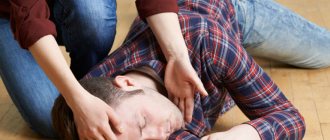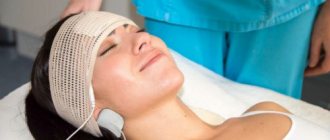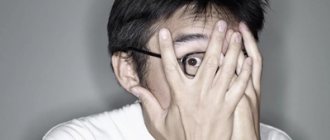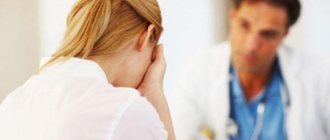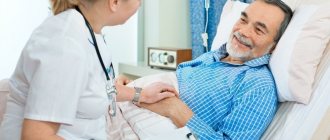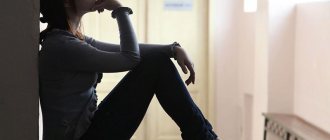In addition to pharmacological and psychotherapeutic treatment of depression, other methods have been proposed for its treatment.
Such methods of treating depression, often effectively combined with pharmacotherapy and psychotherapy, include: intravenous laser irradiation of blood, magnetic stimulation (transcranial low-frequency alternating magnetic field therapy, right-sided pair-polarization therapy), extracorporeal detoxification (plasmapheresis), periodic normobaric hypoxia, craniocerebral hypothermia, light treatment, sleep deprivation, dietary therapy (including its fasting options), balneotherapy (warm baths have been used for a long time to alleviate the condition of a person who is depressed), massage and physical therapy (breathing exercises and physical activity helps to alleviate the symptoms of depression).
Among biological methods of treating depression, electroconvulsive therapy occupies a special place.
| Find out more: Inpatient treatment for depression |
Intravenous laser irradiation of blood
According to the recommendations of domestic scientists, intravenous laser irradiation of blood should be carried out using a low-intensity helium-neon device (FALM-1). The wavelength of laser irradiation is 0.63 microns. The radiation power at the output of the light guide is 8 mW. Session duration is 15 minutes, course of therapy is 8-12 sessions. It was noted that after laser therapy while taking psychopharmacological drugs, the severity of depressive symptoms in 60% of people suffering from depression is almost halved. Patients with manifestations of apathy and melancholy are especially sensitive to laser therapy; a less clear effect is observed in complex depressive syndromes, including symptoms of depersonalization, obsessive states and hypochondria. Laser therapy is ineffective for anxiety and depression. It should be borne in mind that the effect of laser therapy as a non-drug treatment method, as well as of treatment with antidepressants, may be delayed and appear some time after completion of the course of treatment. Currently, there are various modernizations of laser therapy. An example is a differentiated method of low-intensity magnetic laser therapy. This method of treatment includes an individual stage program of a course of combined laser exposure, which consists of venous irradiation of the tissue with continuous red light (0.63 μm) and transcutaneous irradiation with pulsed infrared light (0.89 μm) of projections of a number of biologically active zones and organs using standard magnetic attachments. Laser irradiation usually does not cause side effects or complications.
Pros and cons of treating depression with hypnosis
The traditional approach to the treatment of depressive conditions includes three areas - the prescription of medications (antidepressants), psychotherapy and hypnotherapy. Of these approaches, hypnosis has the fewest disadvantages. If a specialist diagnoses severe depression, it is advisable to combine all three areas of work.
Advantages:
- Health safety. Unlike antidepressants, which cause addiction, digestive disorders and disruption of the central nervous system, hypnotherapy is completely safe. If the therapist strictly follows the procedure protocol, the risk of negative consequences is minimal. The absence of a chemical load on the body is a significant advantage of this technique.
- Long-term effect . Tablets can eliminate symptoms of depression - depression, insomnia, headaches, etc. However, drug therapy does not affect the causes of mental disorders. After completing a course of drug therapy, symptoms return, often gaining strength. In a state of hypnosis, the patient works through the causes of depression, loss of motivation, and self-doubt. This allows you to achieve long-term effects. Some psychotherapists tend to call this effect lifelong, but no treatment method provides one hundred percent guarantees. People who have experienced depressive syndrome must control their emotional state throughout their lives. This will help avoid relapses.
- Psychological comfort of the patient. During sessions of traditional psychotherapy, a person experiences strong emotional experiences. Procedures often cause violent reactions, aggression, and unpleasant memories. It is difficult for patients to open up and trust a stranger. In a state of hypnotic trance, this stage occurs comfortably, without psychological stress. After emerging from a state of altered consciousness, a person often does not remember what he shared with the hypnologist. This eliminates embarrassment, shame, and concealment of information.
- Possibility of deep correction of settings. No matter how much close people, together with psychotherapists, convince a depressed patient of the benefits of positive thinking, this will not produce results. Unconscious pessimism works autonomously, causing anxieties, fears, and depression. Under hypnosis, a person's brain works differently. His receptivity increases many times over, which allows the specialist to establish new attitudes and truly change the way of thinking.
The advantages of the method also include its effectiveness in combating other problems - nightmares, phobias, language barriers, barriers to communication with others. After undergoing hypnotherapy, people feel more confident.
Flaws:
There are few downsides to the hypnotic approach to treating depressive syndrome.
Disadvantages of hypnotherapy often include:
- Periodically arising need for long-term therapy. It is not always possible to solve the problem in one session.
- There is a group of people who feel drowsiness, weakness, and inhibited reactions after hypno-sessions. It is impossible to determine this in advance.
- Many people are afraid that they will not be able to come out of a trance state after the procedure. If the session is conducted by an experienced hypnotherapist, these fears are unjustified.
- Instilling negative thoughts or taking advantage of the helpless state of a hypnotized person is also unlikely to succeed. Even while in a deep trance, the brain rejects commands that contradict its principles and worldview.
In rare cases, a complication occurs called loss of rapport. This term refers to the loss of contact between the hypnotist and the hypnotized. In such cases, the specialist is unable to get a response to requests. This is not a dangerous complication, which ends with the transition of hypnotic sleep to normal sleep. After the session, the hypnotized person wakes up on his own, without the use of medications.
Electroconvulsive therapy
Currently, one of the most effective non-drug methods of treating depression is electroconvulsive therapy, which is used both as an independent method of treatment and in combination with other methods of therapy (Nelson A.I., 2002).
Electroshock therapy methods have been used since ancient Greece. In the temples of Asclepius, depression was treated with electric snakes. In the Middle Ages, it was believed that a strong shock to a patient could bring him out of a state of depression.
Treatment of depression with electric shock was recommended by Hill in 1814 (commotions electriques) (Kempinski A., 2002). Particular interest in this method of treating depression was noted in the early forties of the twentieth century. Electroconvulsive therapy is now generally recognized to be highly effective in treating depression.
It is difficult to overestimate the importance of electroconvulsive therapy for those patients for whom pharmacological treatment is contraindicated (pregnancy, certain somatic diseases, etc.), as well as if it is necessary to overcome depression resistant to other types of therapy.
Typically, to obtain a therapeutic effect from electroconvulsive therapy, about 8-10 shock discharges are required at a frequency of 3 sessions per week.
Subject to monitoring the condition of patients, it is possible that they can be treated with ECT on an outpatient basis or as a day treatment for depression in a hospital.
In general, the combination of ECT with antidepressants is not recommended; the use of small doses of tranquilizers is possible.
Complications of electroconvulsive therapy include spinal injury and circulatory disorders, states of confusion after convulsive attacks, as well as periods of anterograde and retrograde memory impairment have been reported. The latter can persist for a month after the end of ECT. ECT causes a temporary rise in blood pressure (often to quite high levels) and increases the heart rate.
Relative contraindications to ECT include coronary heart disease and arrhythmias, as well as some location of the brain tumor.
Most patients are afraid of this method of therapy, so the importance of professional psychotherapeutic work with the patient, as well as its subsequent support during the ECT therapy itself, should be emphasized.
What are the benefits of hypnosis and how does it work?
The doctor influences a person’s mental state using hypnosis, which performs the following functions:
- Helps to free oneself from attitudes and negative thoughts. Replaces them with optimistic ones.
- Appeal to the subconscious. It is a hidden part of a person that is rarely used. But it is an important resource.
- Relieves the internal mechanisms that caused the formation of depression.
- Finds the true causes of depression and gathers strength to get rid of it.
Treatment of depression with hypnosis is an effective procedure that works comprehensively. It not only relieves symptoms, but also cures the disease and its causes. Let's look at the benefits of treating depression with hypnosis in our center:
- The ability to overcome severe and prolonged depression. This is done by using the resources that are hidden in a person. They help restore good health.
- Immersion in a state of hypnosis frees you from the framework dictated by the physical body. This helps to get positive emotions from your own capabilities.
- Hypnosis allows a patient who suffers from depression to gain control over their consciousness. This will help cope with future depression at an early stage.
All this proves that treating depression with hypnosis in St. Petersburg is very effective.
Magnetic stimulation
Repeated transcranial magnetic stimulation (TMS) was proposed for the non-drug treatment of depression in 1985 (Barcer A., et al., 1985). This method of treating depression, as well as vagal nerve stimulation, currently represent new methods of treating depressive spectrum disorders.
Low-frequency transcranial magnetic stimulation has been proposed as an alternative treatment for depression to electroconvulsive therapy where stimuli do not reach the seizure threshold.
Compared to electroconvulsive therapy, this treatment method has an important advantage: a more precise effect on those brain structures that are involved in the pathogenesis of depression (hippocampal region). In addition, with TMS there are no cognitive impairments that occur after ECT. However, if the effect of TMS and ECT treatment is approximately equal in the treatment of mild or moderate depression, then in the case of severe depression ECT may become a more preferable method (Grunhaus L., et al. 1998).
Studies have shown that TMS induces changes in beta-adrenergic receptors similar to those that occur after ECT and has a positive effect on astroglial tissue in the brain.
TMS has proven effective not only in the treatment of depression, but also in the treatment of schizophrenia, obsessive-compulsive disorder, and post-traumatic stress disorder (George M., et al., 1999). However, it was noted that the positive effect of TMS in the treatment of depression is observed only in 50% of cases. In addition, most patients experienced frequent relapses of depression after several months of remission following TMS. The combination of high-frequency and low-frequency magnetic stimulation appears to be more preferable for the quality of remission and its duration.
From the point of view of the pathogenesis of depression, the method of cyclic transcranial magnetic stimulation seems promising, since weak magnetic fields can reduce circadian rhythms (Mosolov S.N., 2002). Currently, this method of therapy is used to overcome treatment-resistant depression.
The first TMS studies proved the superiority of fast stimulation over slow stimulation, however, the number of such studies was quite limited and the area of influence was not precisely localized. Recent studies show a higher effectiveness of low-frequency magnetic stimulation compared to high-frequency (Klein E., et al., 1999).
Typically, magnetic stimulation is carried out using a unilateral technique: on the projection of the left dorsolateral prefrontal region (high frequency or fast stimulation - < 10 Hz), less often stimulation of the right prefrontal region is performed. Low-frequency magnetic stimulation affects a selective area of the anterolateral prefrontal cortex of the left hemisphere.
A course of low-frequency magnetic stimulation for non-drug treatment of depression is 10 sessions, with an average duration of 30 minutes. Sessions are held every other day; stimulation parameters - 1.6 T/1 Hz. The therapeutic effect is noticeable after the first therapy session and most often manifests itself as calming, reducing the severity of anxiety, and restoring sleep. This method is of interest due to the rapid development of effect and the absence of complications. As noted above, unlike ECT, TMS does not require the use of anesthesia.
Vagal stimulation
Vagal stimulation for the non-drug treatment of depression was proposed in 1994 (Harden C., et al., 1994). When conducting vagal stimulation, areas of the lateral and orbital regions of the anterior parts of the brain, as well as the parabrachial nuclei of the nerve and the locus ceruleus region are affected. The impact on the last part of the brain ensures that this method influences the functional activity of the thalamus and hypothalamus.
After the use of vagal stimulation, an increase in the content of biogenic amines in the limbic region of the brain was noted (Ben-Menachem E., et al., 1995)
Sleep deprivation
A relatively gentle non-drug treatment for depression is sleep deprivation, which was actively developed in the early 70s of the twentieth century. Three types of sleep deprivation were used: total, partial and selective. Total sleep deprivation involves being awake for 36-40 hours, partial sleep deprivation means sleeping from 5 pm to 1 am, then staying awake until the next evening or sleeping from 9 pm to 1 hour 30 minutes then staying awake until the next evening - sleep duration 4, 5 hours and selective sleep deprivation, focused on selective deprivation of only REM sleep. For the treatment of depression with symptoms of melancholy, the combination of total sleep deprivation with light therapy at night turned out to be most effective. It should be noted that with complete sleep deprivation, lethargy and drowsiness are more often observed. In most cases, sleep deprivation is carried out two days later on the third; the therapeutic course includes an average of 5 sessions.
Sleep deprivation, both partial and complete, changes the structure of sleep, lengthens the latency period and reduces the duration of rapid eye movement (REM) sleep. As a rule, an improvement in mood in patients is observed after just one sleepless night, however, this effect is usually short-lived and lasts about three days. Improvement in mood occurs gradually, expressed in the form of a feeling of general relief, a decrease in the feeling of lethargy, apathy, and the disappearance of experiences of mental pain and bitterness.
In prognostic terms, the relationship between the change in the mood of a depressed patient after the first and second sleepless night is important.
The mechanism of the therapeutic effect of sleep deprivation is difficult to reduce only to the simple elimination of one of the phases of sleep or the resynchronization of a time-shifted circadian rhythm. Probably one of the mechanisms for improving the condition of a depressed patient after sleep deprivation is the activation of adrenergic structures.
Clinics and specialists
To avoid mistakes and choose a qualified hypnologist, you need to carefully study the information about clinics and specialists. The TOP 8 best medical institutions and doctors in Moscow and St. Petersburg providing hypnotherapy services for mental disorders include:
Dr. Bormenthal
- Reception is conducted by famous doctors - psychotherapists, hypnologists, candidates of medical sciences.
- The clinic treats depression using modern hypnotherapy, and treats a wide range of psychosomatic disorders and addictive conditions.
- Center address : St. Petersburg, st. Varshavskaya, 23 k2,
- Telephone.
- Website : https://bormentaldoctor.ru
Clinic "AndroMeda"
- The reception is conducted by Mordovin Alexander Vladimirovich - psychotherapist, hypnologist, psychiatrist-narcologist.
- The specialist works using a method of changing behavioral patterns, including teenagers.
- Center address : St. Petersburg, Zvenigorodskaya street, 12.
- Telephone.
- Website : https://andromeda-clinic.ru
Neurosis Clinic
- Consultations are conducted by Vitaly Arkadyevich Traskunov, a member of the international psychotherapeutic association, a member of the St. Petersburg Psychiatric Society.
- Full name of medical.
- Center address : St. Petersburg, 15th line of Vasilyevsky Island, 4-6.
- Telephone.
- Website : https://knevrozov.com
Light treatment
Non-drug treatment of depression has been tried for more than twenty years using light, hoping to normalize human biological rhythms altered by the disease. Natural ways to treat depression include taking a temporary vacation in the winter to places where there is more daylight and longer hours. In addition, prolonged exposure to the street on sunny days helps overcome depression. Light therapy or phototherapy is most indicated for seasonal mood disorder, especially if episodes of worsening depression occur in the winter or spring seasons. According to some authors, with a course of light therapy from three to fourteen days, the effectiveness of this method reaches 60-70%.
It has been experimentally proven that changes in biological rhythms occur when the patient is illuminated with a light source of increased intensity. Attempts have been made to prevent seasonal exacerbation of affective psychosis by “lengthening the daytime period” using artificial lighting and sleep deprivation.
It is assumed that bright and intense light has a multifaceted effect on the centers of circadian rhythms: suppression of the secretion of the pineal gland hormone melatonin, changes in the concentration of cortisol and adrenocorticotropic hormone, increased synthesis of catecholamines, normalization of the function of the autonomic system. Most experts associate the positive effect of light therapy with an increase in the regulatory function of the cerebral cortex, as well as with the normalization of the activity of the autonomic system.
During light treatment, the patient stays daily, preferably in the morning, for several hours (less than half an hour) in a brightly lit room or next to an intense light source specially designed for this purpose.
It was previously believed that to obtain a therapeutic effect, a room illumination of at least 2600 and no more than 8000 lux was required. Such illumination was achieved by using incandescent lamps located on the ceiling of the chamber at a height of about 2.5 meters. Typically about 30 200 W incandescent lamps were used. It was noted that the effectiveness of light treatment increases when the therapeutic room is painted white or green, as well as when the patient’s body is exposed to the maximum (more than 25%).
Before starting light therapy, the patient is carefully examined, usually paying attention to the state of the autonomic system and indicators of the cardiovascular system.
Long therapy sessions were recommended - from 1.5 to 3 hours, with a total number of sessions - 15, however, it was emphasized that these numbers, as well as the time of the therapy session, should be determined based on the characteristics of the clinical picture of depression. Currently, 30 minute phototherapy sessions are recommended.
Some researchers recommend light treatment at any time of the day, both daily and with two- to three-day breaks. Phototherapy sessions are especially effective in the morning, immediately after waking up.
During the therapy session, patients, who are asked only to keep their eyes closed, are free to move around the room. To avoid getting used to the light, once every 3 minutes. should be looked at periodically for 1 second. on the lamps.
After a therapeutic session, there may be an increase in blood pressure, less often a decrease, probably due to the thermal effect, the body temperature usually increases. Quite often, patients report slight drowsiness. Changes in the RR interval on the ECG can be a reliable predictor of the effectiveness of light therapy. In some cases, the therapeutic effect is possible both during the session and 2-3 days after its completion.
The most common complications of phototherapy are: insomnia, increased fatigue, irritability, headaches. These complications usually occur in people who try to work hard during light therapy.
It is interesting to note the sensitivity to light therapy in patients with symptoms of anxiety. Patients with symptoms of melancholy and apathy respond to this type of therapy to a lesser extent. Speaking about the mechanism of the therapeutic effect of this therapy, we should emphasize the thermal effect of light. General contraindications to light treatment are cancer and eye pathology.
Currently, special table-top and stationary devices have been developed for non-drug treatment of depression using light. Full spectrum lamps are more effective because they produce light that is close to natural light. To ensure that the patient does not suffer from light treatment, special filters are used that block ultraviolet rays and thereby protect the patient’s retina from intense radiation (prevention of cataracts).
Recent studies have shown that the effectiveness of light exposure is determined by three characteristics: intensity, spectrum and exposure time. In connection with the above, phototherapy techniques are being developed to enrich the light flux with long-wave ultraviolet radiation, which has a biologically active effect. This technique involves using a full-spectrum light source, since it is as close to natural light as possible.
Modern achievements of phototherapy include “artificial dawn” (a special electric lamp at the patient’s bedside that intensifies its illumination before dawn).
Reviews
According to reviews of people who have been treated for depressive syndrome under hypnosis, the technique is very effective. About 30% noted improvement after the first two sessions. The full course (8-10 procedures) relieved depression and depression in more than 80% of patients. Interestingly, positive dynamics of therapy are observed even among skeptical people.
In their reviews, patients note the following effects after a course of hypnotherapy:
- a surge of strength;
- increased performance;
- restoration of motivation;
- elimination of headaches;
- normalization of sleep;
- increased self-esteem;
- improved appetite;
- increasing physical activity.
Symptoms of the disease go away as a result of replacing negative unconscious attitudes with positive ones. Moreover, during a hypnotic trance session, the doctor can additionally work out other problems - phobias, panic attacks, alcohol and drug addiction, and feelings of guilt.
After working with a hypnologist, most people can stop taking antidepressants completely. Another important feature of this line of treatment is the ability to treat depression in adolescents. During adolescence, self-doubt, problems in relationships with parents and peers, as well as complexes often lead to depression and even suicidal thoughts. Timely hypnotherapy helps save the health and life of a teenager.
- “Having completed a course of hypnotherapy, I can confidently say that this is a very unusual experience. After the first sessions, I was able to completely give up the antidepressants (carmabazepim, eglanil, etc.), which had been present in my life for several years. I managed to cope with insomnia, the nightmares that had haunted me since childhood went away. I can’t say that a new life has begun, but some of the problems definitely remained in the psychotherapist’s office. I continue to work on myself. I’m glad that I didn’t have to wait very long for the result.”
- “I encountered depression after experiencing trauma. I honestly admit that going to a hypnosis session for the first time was scary. It seemed like nothing would work out. However, in the process of working with the doctor, I myself did not notice how I lost awareness and fell inside myself. I managed to feel light and free. My mood improved after just five sessions. What else I would like to note is that the pain that tormented me after the accident is almost gone. I can’t say for sure that hypnosis had this effect, but I almost managed to give up painkillers.”
- “Since childhood, I considered hypnosis to be deception and quackery. My parents frightened me with stories about gypsies and other horrors. After the divorce, he could not control himself and began to abuse alcohol. I drank a lot until I realized it was time to stop. With treatment came depression and apathy. I didn’t want to live at all. I couldn’t get the desired effect from the pills, after which I gave up. A friend advised me to go to a clinic that treats trance. Almost 2 months have passed since the first procedure and I can say that it really works. Of course, it’s hard to immediately believe skeptics, but I felt the result myself. I returned to work, started noticing changes in the weather outside, communicating with people, and not avoiding holidays. Thanks to the one who gave useful advice in a timely manner"
Biofeedback
Non-drug treatment methods include biofeedback, which by and large refers to psychotherapeutic methods of treating depression. To carry out this method of treatment, special psychophysiological equipment is used, which implies the possibility of printing various psychophysiological indicators: bioelectric activity of the brain, muscles, heart, galvanic skin response, etc. 20-25 sessions of therapy are carried out, based on the use of biofeedback and aimed at increasing power of alpha waves in the left occipital region. Most patients experienced a 50% reduction in the severity of depressive symptoms.
Get rid of depression
Depression is a type of emotional disorder. All people are characterized by emotional reactions: we react to pleasant events with a feeling of joy; to negative events, a reaction in the form of sadness and sadness is also adequate.
Correct diagnosis and treatment of depression helps to significantly improve the quality of life, and sometimes even save life, because... with severe depression, melancholy and a feeling of hopelessness push one to commit suicide.
If you or your loved ones have problems in the field of mental health - fears, anxiety, bad mood - contact the Clinic of Professor F. F. Preobrazhensky. Here they will understand and help you.
Contact a specialist
Sign up for a consultation tel. 242-82-65
Make an appointment
Mikhail Samuilovich Pruss
Psychiatrist-narcologist
More than 25 years of experience Author of popular books on alcohol and drug addiction
Therapeutic massage and breathing exercises
Auxiliary methods for treating depression include breathing exercises, therapeutic massage (especially if the onset of depression is triggered by mental trauma) and meditation.
Such breathing on the seashore, in a pine forest, is useful, since such breathing increases the amount of oxygen. The massage is usually performed for 30 minutes and its therapeutic effect is associated with a decrease in stress hormones in the blood. In addition, massage relieves internal tension and normalizes sleep.
Diet food
The effectiveness of dietary nutrition as a non-drug treatment for depression has also not been confirmed by scientific research.
However, it is generally accepted that the diet of a patient with depression must necessarily include complex carbohydrates, which naturally contribute to an increase in the production of serotonin by brain neurons, the deficiency of which during depression (especially with symptoms of anxiety) is well known. Complex carbohydrates are found in legumes and whole grains. An increase in the production of norepinephrine and dopamine - neurotransmitters, the concentration of which is reduced in depression with symptoms of apathy, is promoted by a diet high in protein (beef, poultry, fish, nuts, eggs). At the same time, there is an opposite point of view about the inadmissibility of a high protein content in food that should be consumed when suffering from depression. It is recommended to exclude sugar, alcohol, caffeine, convenience foods and canned food. Foods high in saturated fatty acids are undesirable. Return to Contents
